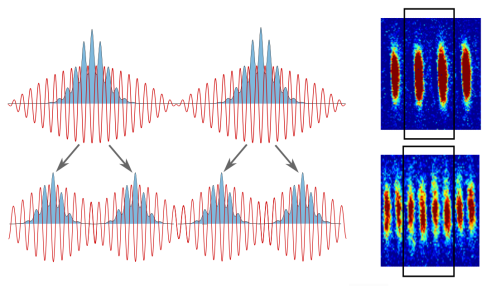 |
We report the realization of two Mach–Zehnder interferometers operating in parallel with Bose–Einstein condensates trapped in two neighboring double-well potentials, implemented using Beat-Note Superlattices with large spatial periodicities. Both the splitting and recombination operations between the two interferometer modes are performed with the atoms fully trapped, exploiting tunneling through the central barrier. This is made possible by tuning the scattering length of potassium atoms to zero via a broad Feshbach resonance. Our system constitutes the first experimentally realized trapped-atom gradiometer and represents a promising platform for fundamental physics tests and high–spatial–resolution force measurements. T. Petrucciani et al. |
 |
Our heartfelt welcome to Dr. Chiara Mazzinghi, who has recently completed her PhD at ICFO and is now joining our team!
We're delighted to have her on board!
|
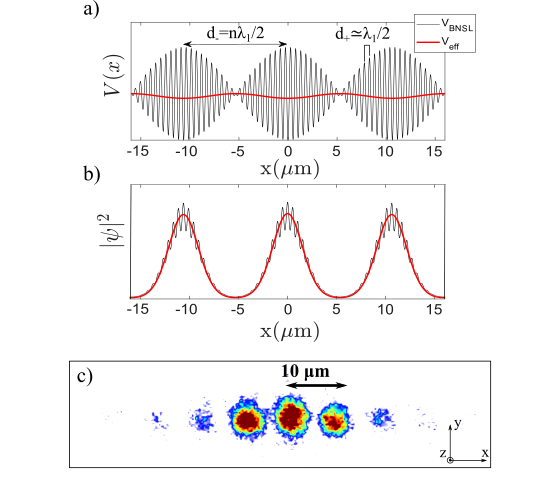 |
We report the experimental realization of a new kind of optical lattice for ultra-cold atoms where arbitrarily large separation between the sites can be achieved without renouncing to the stability of ordinary lattices. Two collinear lasers, with slightly different commensurate wavelengths and retrorefected on a mirror, generate a superlattice potential with a periodic \beat-note" profile where the regions with large amplitude modulation provide the effective potential minima for the atoms. To prove the analogy with a standard large spacing optical lattice we study Bloch oscillations of a Bose Einstein condensate with negligible interactions in the presence of a small force. The observed dynamics between sites separated by ten microns for times exceeding one second proves the high stability of the potential. This novel lattice is the ideal candidate for the coherent manipulation of atomic samples at large spatial separations and might find direct application in atom-based technologies like trapped atom interferometers and quantum simulators. L. Masi, et al., |
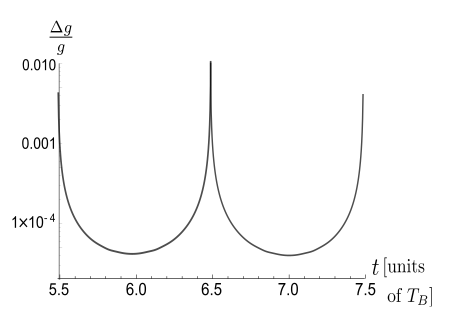 |
We study the ultimate bounds on the sensitivity of a Bloch-oscillation atom interferometer where the external force is estimated from the measurement of the on-site atomic density. For external forces such that the energy difference between lattice sites is smaller than the tunneling energy, the atomic wave-function spreads over many lattice sites, increasing the separation between the occupied modes of the lattice and naturally enhancing the sensitivity of the interferometer. To investigate the applicability of this scheme we estimate the effect of uncontrolled fluctuations of the tunneling energy and the finite resolution of the atom detection. Our analysis shows that a horizontal lattice combined with a weak external force allow for high sensitivities. Therefore, this setup is a promising solution for compact devices or for measurements with high spatial resolution. I. Nałȩcz, et al., |
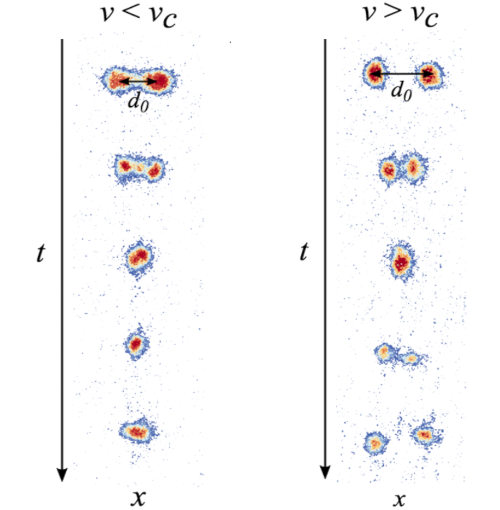 |
We report on the study of binary collisions between quantum droplets formed by an attractive mixture of ultracold atoms. We distinguish two main outcomes of the collision, i.e., merging and separation, depending on the velocity of the colliding pair. The critical velocity vc that discriminates between the two cases displays a different dependence on the atom number N for small and large droplets. By comparing our experimental results with numerical simulations, we show that the nonmonotonic behavior of vc is due to the crossover from a compressible to an incompressible regime, where the collisional dynamics is governed by different energy scales, i.e., the droplet binding energy and the surface tension. These results also provide the first evidence of the liquidlike nature of quantum droplets in the large N limit, where their behavior closely resembles that of classical liquid droplets. G. Ferioli et al., |
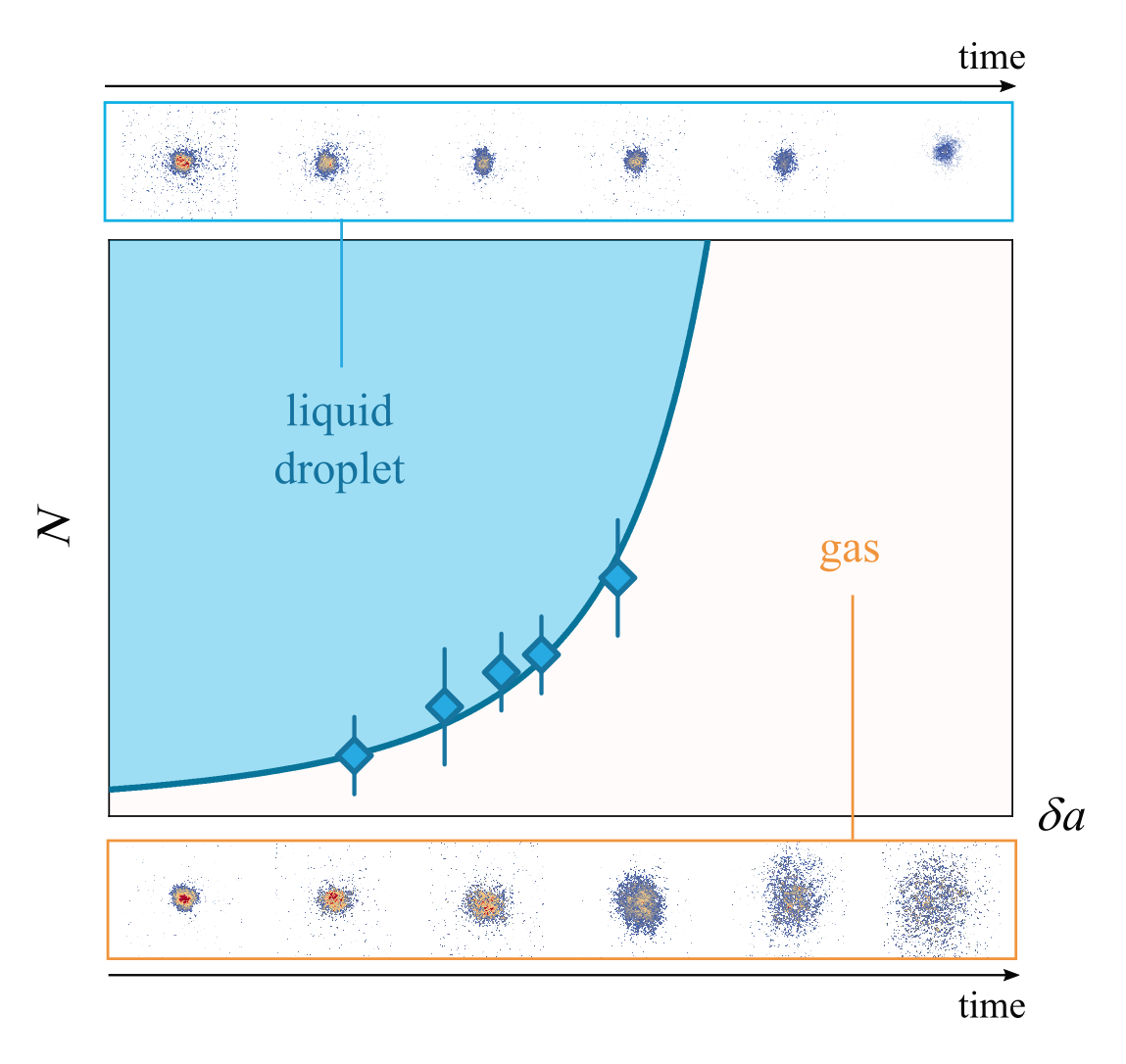 |
We report on the observation of quantum liquid droplets in a bosonic mixture. While ultracold atomic systems are commonly found in a gas phase, recent theoretical and experimental results have surpringly pointed out that under special circumstances condensed atoms can form self-bound liquid-like droplets. At the origin of this new phase is the coexistence of repulsive and attractive forces that perfectly balance to generate the self-binding mechanism. The two competing energies are provided by the mean-field interaction and the first beyond mean-field correction, the so-called Lee-Huang-Yang term. We observe the existence of such self-bound ensembles in a bosonic mixture of K-39 atoms and we characterize their equilibrium properties. Quantum droplets are predicted to be macroscopic zero-temperature objects, due to their peculiar energy spectrum, where no discrete modes are expected below the particle emission threshold. The observation reported in this work certainly opens the way to further studies of the exotic properties of this new phase, which also constitutes the only known quantum liquid together with helium nanodroplets. G. Semeghini, et al., |
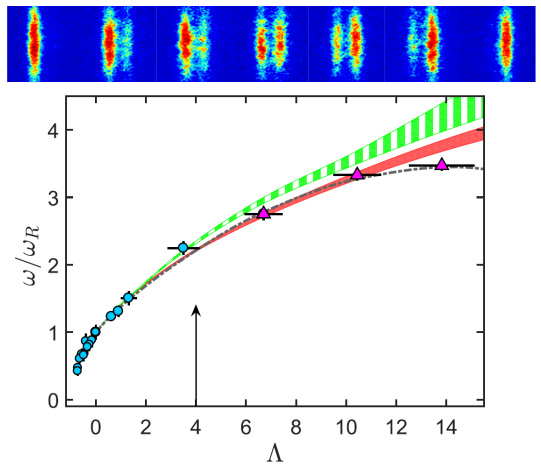 |
We explore the interplay between tunneling and interatomic interactions in the dynamics of a bosonic Josephson junction. We tune the scattering length of an atomic K39 Bose-Einstein condensate confined in a double-well trap to investigate regimes inaccessible to other superconducting or superfluid systems. In the limit of small-amplitude oscillations, we study the transition from Rabi to plasma oscillations by crossing over from attractive to repulsive interatomic interactions. We observe a critical slowing down in the oscillation frequency by increasing the strength of an attractive interaction up to the point of a quantum phase transition. With sufficiently large initial oscillation amplitude and repulsive interactions, the system enters the macroscopic quantum self-trapping regime, where we observe coherent undamped oscillations with a self-sustained average imbalance of the relative well population. The exquisite agreement between theory and experiments enables the observation of a broad range of many body coherent dynamical regimes driven by tunable tunneling energy, interactions and external forces, with applications spanning from atomtronics to quantum metrology. G. Spagnolli, et al., |
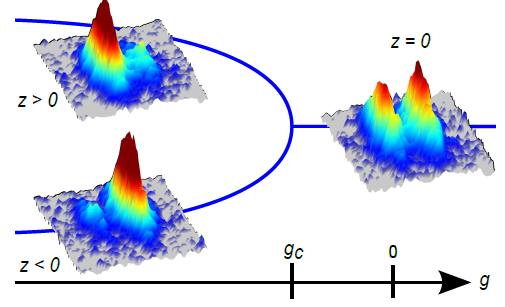 |
We report the experimental observation of the full phase diagram across a transition where the spatial parity symmetry is broken. Our system consists of an ultra-cold gas of 39K with tunable interactions trapped in a double-well potential. At a critical value of the interaction strength, we observe a continuous quantum phase transition where the gas localizes in one well or the other, thus breaking the underlying symmetry of the system. Furthermore, we show the robustness of the asymmetric state against controlled energy mismatch between the two wells. This is the result of hysteresis associated with an additional discontinuous quantum phase transition that we fully characterize. Our results pave the way to the production of a broad class of quantum entangled states including Schroedinger cat states with macroscopic atom number. A. Trenkwalder et al., |
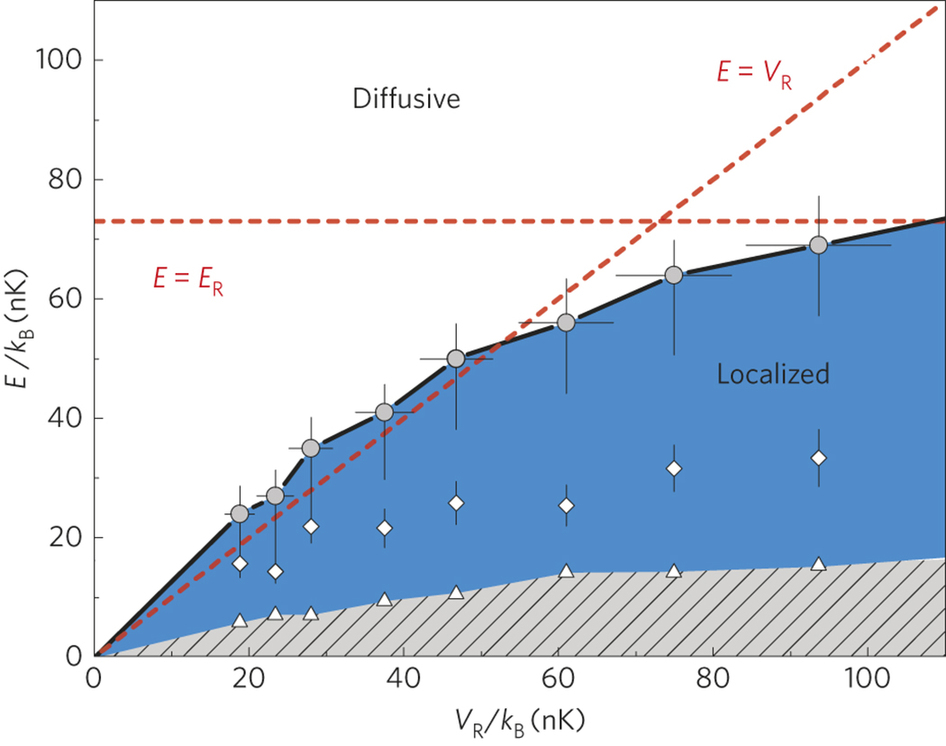 |
Anderson localization is a universal phenomenon affecting non-interacting quantum particles in a disordered environment. In three spatial dimensions, theory predicts a quantum phase transition from localization to diffusion at a critical energy, the mobility edge, which depends on the disorder strength. Although it has been recognized already long ago as a prominent feature of disordered systems, a complete experimental characterization of the mobility edge is still missing. Here we report the measurement of the mobility edge for ultracold atoms in a disordered potential created by laser speckles. We are able to control both the disorder strength and the energy of the system, so as to probe the position of the localization threshold in the disorder–energy plane. Our results might allow a direct experiment–theory comparison, which is a prerequisite to study the even more challenging problem of disorder and interactions. G. Semeghini, et al., |
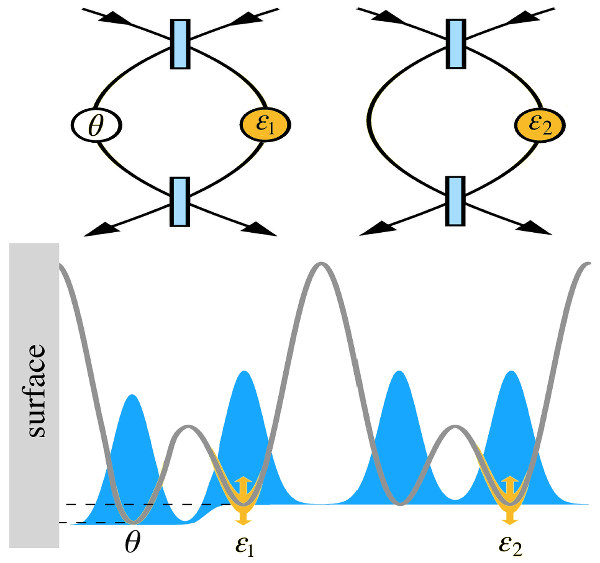 |
Differential interferometry (DI) with two coupled sensors is a most powerful approach for precision measurements in the presence of strong phase noise. However, DI has been studied and implemented only with classical resources. Here we generalize the theory of differential interferometry to the case of entangled probe states. We demonstrate that, for perfectly correlated interferometers and in the presence of arbitrary large phase noise, sub-shot noise sensitivities — up to the Heisenberg limit — are still possible with a special class of entangled states in the ideal lossless scenario. M. Landini et al., |
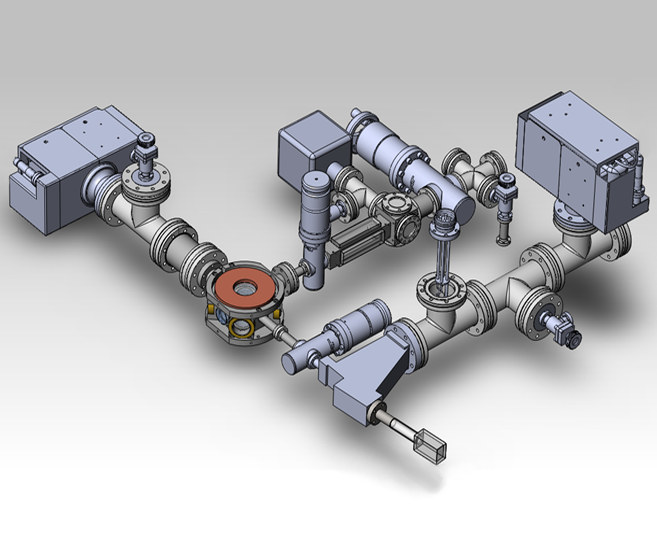 |
We report the realization of a Bose-Einstein condensate of 39K atoms without the aid of an additional atomic coolant. Our route to Bose-Einstein condensation comprises sub-Doppler laser cooling of large atomic clouds and evaporative cooling in an optical dipole trap where the collisional cross section can be increased using magnetic Feshbach resonances. Large condensates with almost 106 atoms can be produced in less than 15 s. Our achievements eliminate the need for sympathetic cooling with Rb atoms, which was the usual route implemented until now due to the unfavorable collisional property of 39K. M. Landini et al., |


